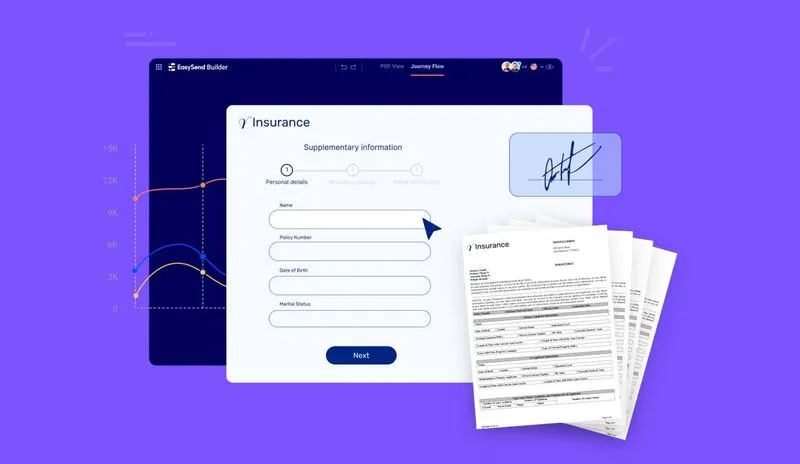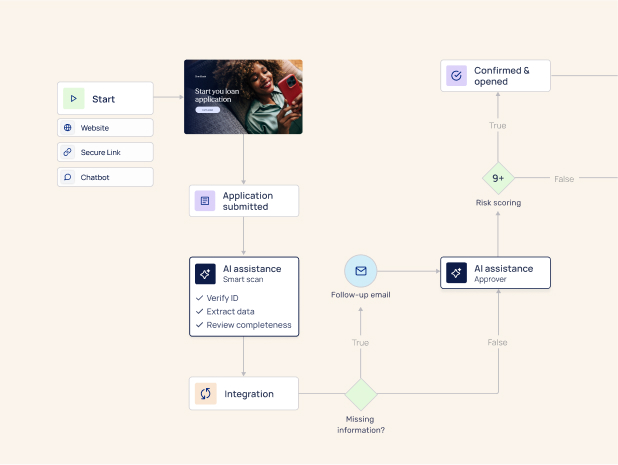In the dynamic landscape of the finance industry, Artificial Intelligence (AI) stands tall as a disruptive force, ushering in a new era of innovation and efficiency. Nowhere is this more evident than in the realm of underwriting, a traditionally time-intensive process embedded with complexities.
The underwriting process is a foundational aspect of the insurance sector, involving risk assessment and decision-making to determine the terms under which a policy will be issued.
The introduction of AI in underwriting is heralding a paradigm shift, redefining risk assessments and reimagining the future of insurance operations. Let's delve into the transformative potential of AI in streamlining the underwriting process, unraveling its profound implications on accuracy, speed, and overall customer experience.
The impact
AI-driven technology has the potential to revolutionize how underwriters make decisions and achieve better results. With AI, data can be processed at an unprecedented rate, allowing for quick risk analysis and automated decisions. This is particularly advantageous in areas where complex calculations are required or large numbers of data points need to be considered.
Moreover, with AI algorithms continuously learning and adapting to new data, underwriters can make decisions more accurately and consistently. The use of predictive analytics derived from AI models can further improve accuracy, allowing for the identification of patterns that are difficult to spot by human experts alone.
Benefits
The incorporation of AI in underwriting offers a multitude of benefits that can be largely credited to the automation of the decision-making process.
AI algorithms can process and analyze a vast array of data quickly, reducing manual labor associated with traditional methods while simultaneously increasing accuracy. This helps to speed up the underwriting process as decisions can be made in a fraction of the time compared to traditional models.
Additionally, predictive analytics derived from AI models enable insurers to proactively identify and address potential risks before they become a problem. Automated decision-making allows for real-time execution of decisions, providing customers with faster turnaround times and better service.
- Automation of Information Collection and Validation: AI can automate the gathering and validating of information, which significantly streamlines the underwriting process. This automation reduces underwriter fatigue and allows underwriters to focus on more complex tasks.
- Improved Decision-Making: AI and machine learning can help in making complex decisions. These technologies can analyze large amounts of data quickly and accurately, leading to more informed and efficient decision-making.
- Real-time Decision Making: In many financial services, quick decision-making can be a competitive edge. AI-driven systems can approve or decline applications in real-time, enhancing customer experience and operational efficiency.
- Risk Assessment: AI models can be trained to predict risks based on historical data. This is especially useful in areas like health or life insurance, where predicting potential future diseases or life expectancy is crucial. These predictive insights can lead to more accurate premium pricing.
- Increased Efficiency and Customer Satisfaction: By streamlining the underwriting process, AI not only increases operational efficiency but also improves customer satisfaction. Faster processing times and instant disbursements enhance the customer experience
- Fraud Detection: Fraudulent claims or applications can cost companies millions. AI can assist in identifying patterns consistent with fraud, ensuring that only legitimate claims and applicants are processed. AI can also be leveraged to detect unusual patterns or inconsistencies in the data by triggering alerts, thereby enhancing the security of the underwriting process

- Claims Management: AI can streamline the administrative process from the moment a customer opens an insurance claim through process automation
- Risk Segmentation: Machine learning can process a vast array of data points, leading to more detailed and accurate risk segments. This ensures that clients are grouped more accurately according to their risk profile, leading to fairer pricing
- Personalization: With AI, underwriters can offer personalized rates and coverages based on individual risk profiles rather than relying on broader risk categories
- Cost Efficiency: Automating many of the manual tasks associated with underwriting can result in significant cost savings. This includes labor costs as well as the costs associated with errors in manual processes
- Consistency: Human underwriters might have variations in decisions based on their subjective judgment, experiences, or even mood. AI provides consistent decision-making based on the data it has been trained on.
- Continuous Learning and Updating: The traditional underwriting process requires periodic reviews to update the risk models. AI-driven systems can continuously learn from new data, ensuring that the underwriting models are always current
- Expanding Data Sources: With the rise of IoT and wearable devices, new data sources are becoming available for risk assessment. AI can process this data efficiently, giving underwriters a more comprehensive view of risk.
- Enhanced Customer Experience: AI can facilitate seamless self-service platforms, where customers can get quotes, apply, and receive decisions without human intervention, speeding up the process and improving user satisfaction.
However, while there are many benefits, it's important to consider potential challenges and criticisms:
- Ethical Concerns: Relying heavily on AI might lead to decisions based on biased data, potentially leading to unfair or discriminatory outcomes.
- Job Displacement: Automation of the underwriting process could lead to job losses in the sector.
- Over-Reliance: A heavy reliance on AI without human oversight might lead to unintended errors or oversight of nuanced cases that require human judgment.
The future
The future of AI in underwriting looks very promising, as it is increasingly becoming a critical technology for insurers and reinsurers alike. The use of AI to streamline the underwriting process is ushering in a new era of efficiency, accuracy, and customer experience.
As we move toward the future, AI and its related technologies will continue to have a seismic impact on all aspects of the insurance industry, from distribution to underwriting and pricing. While AI cannot entirely replace human underwriters, it certainly can assist them in making their work more efficient and accurate.





